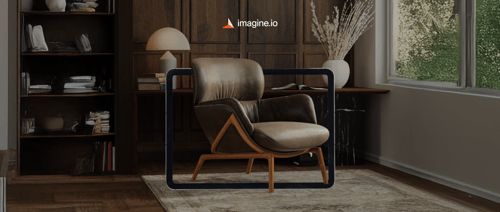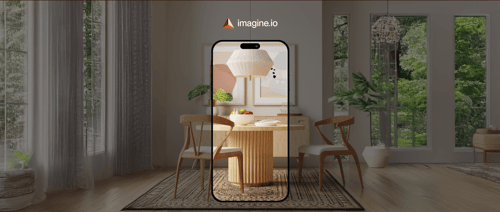Imagine browsing an online furniture store, eyeing a sleek sectional sofa. You wonder: Will it fit your space? Does the navy blue fabric look as rich in person? These questions often stall purchases, leaving shoppers hesitant and retailers grappling with returns. In a market where furniture is a high-stakes purchase, bridging the gap between digital browsing and real-world confidence is critical. That's where 3D visualization steps in, revolutionizing how retailers connect with customers. By offering immersive, interactive experiences, this technology is transforming eCommerce, particularly in key markets like Austin, New York, Los Angeles, and Canada. The global 3D rendering market System: market, valued at $3.85 billion in 2023, is expected to reach $23.78 billion by 2034, growing at an 18% CAGR from 2025 to 2034, driven by demand for efficient, cost-effective production and advanced VR and AR applications. For furniture retailers, adopting 3D visualization isn't just innovative it's essential for staying competitive.
The Evolution of Furniture Visualization
The era of flat, uninspiring product photos is over. Today's furniture shoppers demand dynamic, interactive experiences that let them explore products in detail. A 2024 study by 3D Cloud by Marxent found that most consumers prefer retailers with 3D visualization tools, with 60% seeking in-store assistance for configuration and visualization. AI-driven rendering pipelines are accelerating this shift, producing high-quality assets faster than traditional photoshoots. Cloud-based platforms like imagine.io enable retailers to upload product models and generate images, videos, 360-degree views, and configurators in minutes, eliminating the need for heavy local computing power. Meanwhile, AR tools allow customers to virtually place furniture in their homes, a feature 77% of consumers want, according to IPSOS research. These advancements are boosting engagement and driving conversions across major markets like the United States and Canada.
This transformation aligns with the needs of brands like Ruggable and SertaSimmons, who target tech-savvy consumers on platforms like Instagram and LinkedIn. By offering scalable, high-quality visual assets, retailers can meet rising expectations and stand out in a crowded digital marketplace.
Real-World Success Stories
Boosting Sales with 360-Degree Views
A mid-sized U.S. furniture retailer saw a significant increase in online sales after replacing static images with 360-degree product views and zoomable detail renders. Customers could explore every angle of a product, from the stitching on a leather chair to the grain of a wooden table, fostering confidence and reducing hesitation. This aligns with imagine.io's claim that their platform produces visuals indistinguishable from real photoshoots, a fact backed by studies showing eCommerce experts can't tell the difference.
Cutting Returns with Configurable Visuals
A European furniture brand reduced returns by 25% by implementing configurable 3D visualizations. Shoppers could preview color options, fabric textures, and dimensions before buying, ensuring their purchases matched their expectations. This addresses a key pain point in furniture eCommerce, where returns often stem from mismatches between online images and delivered products.
Unifying Global Catalogs
A global marketplace unified its vendor catalog with consistent 3D visuals, strengthening brand identity and streamlining the shopping experience. By centralizing asset creation, the platform ensured high-quality visuals across thousands of SKUs, a critical factor for brands like Kichler and Hunter Fan operating in diverse regions like Dallas, Las Vegas, and High Point.
Navigating Challenges and Objections
Investment and Pricing Concerns
Adopting 3D visualization comes with challenges. Smaller retailers may balk at the initial costs of modeling and integration, especially when compared to project-based alternatives. imagine.io's subscription model, which offers unlimited asset creation, can seem complex compared to competitor's standardized pricing. However, the long-term savings faster production, reduced studio costs, and lower return rates often outweigh these concerns.
Technical and Consistency Hurdles
Maintaining brand consistency across thousands of SKUs and multiple channels, such as Facebook and YouTube, is no small feat. Technical issues, like slow load times or device compatibility, can also frustrate shoppers, particularly on older devices or in regions with limited bandwidth. Decentralized asset creation risks inconsistent visual quality, which can undermine trust. Retailers must invest in robust platforms to mitigate these issues.
Seizing Opportunities for Growth
Higher Conversions and Fewer Returns
3D visualization drives conversions by giving customers a clear, realistic view of products. Features like 360-degree spins and AR previews reduce uncertainty, leading to fewer returns. Accurate representations of size, scale, and color ensure customers receive exactly what they expect, boosting satisfaction and loyalty.
Faster Market Entry
AI-powered tools like those from imagine.io streamline asset creation, enabling retailers to launch products faster. This is a game-changer for brands like King Koil and Kohler, who need to scale quickly across complex catalogs in competitive markets.
Global Brand Consistency
Centralized 3D asset creation ensures visual consistency across regions like Chicago, Los Angeles, and Canada. This unified approach strengthens brand identity and builds trust, whether customers are browsing on Instagram or a retailer's website. It also supports seamless omnichannel experiences, critical for modern shoppers.
Upselling Through Immersive Scenes
3D visualizations enable immersive room setups that showcase complementary products, encouraging upselling and cross-selling. For example, a customer viewing a sofa in a fully styled virtual living room might add a matching coffee table or lamp to their cart, driving higher order values.
The Future of Furniture eCommerce
The furniture industry is undergoing a seismic shift, with 3D rendering at its core. North America led the market in 2023, but Asia Pacific is poised for rapid growth, fueled by rising demand for VR and AR applications. As these technologies mature, barriers to entry will decrease, making 3D visualization accessible to smaller retailers. Future innovations real-time personalization, deeper VR integration, and AI-driven texture and lighting automation will further enhance the shopping experience. Retailers like Kegworks and Sinomax USA can leverage platforms like imagine.io, which offers unmatched quality, speed, and scalability, to stay ahead. The takeaway? Adopting 3D visualization now positions retailers to capture market share, delight customers, and thrive in a digital-first world.
Frequently Asked Questions
How does 3D visualization improve furniture sales and reduce returns?
3D visualization allows customers to explore furniture from every angle with 360-degree views, zoomable details, and configurable options for colors and textures. This technology helps shoppers make confident purchasing decisions by providing accurate representations of size, scale, and appearance, leading to higher conversion rates and up to 25% fewer returns as customers receive exactly what they expect.
What are the main benefits of using AR and 3D tools for furniture shopping?
AR and 3D visualization tools enable customers to virtually place furniture in their homes and interact with products before buying, with 77% of consumers wanting this feature according to research. These tools boost customer engagement, reduce purchase hesitation, and allow for immersive room setups that encourage upselling of complementary products like matching tables or lamps.
How much does it cost to implement 3D visualization for furniture retailers?
While there are initial costs for 3D modeling and platform integration, cloud-based solutions like subscription models offer unlimited asset creation that often provides long-term savings. Retailers benefit from faster production times, reduced studio photography costs, lower return rates, and the ability to launch products quickly across global markets, making the investment worthwhile for competitive advantage.
Disclaimer: The above helpful resources content contains personal opinions and experiences. The information provided is for general knowledge and does not constitute professional advice.
You may also be interested in: Imagine.io | Award Winning 3D + AI Product Visualization
Struggling with expensive, outdated product visuals that slow down your creative process and stunt eCommerce growth? imagine.io's AI-powered platform empowers furniture, home décor, and textile brands to effortlessly produce striking 3D images, immersive videos, AR experiences, and interactive configurators. Cut production costs up to 70%, boost conversions 5X, speed up prototyping, and supercharge your online sales. Ready to elevate your product visuals and captivate customers? Book a demo with imagine.io today!
Powered by flareAI.co




.png?width=500&name=How%20to%20Add%20a%203D%20Product%20Configurator%20to%20Your%20WordPress%20Website%20(Complete%20B2B%20Guide).png)
















%20(1).png?width=500&name=Why%20Exploded%20Mattress%20Views%20Matter%20(And%20How%20to%20Generate%20Them)%20(1).png)
.png?width=500&name=Best%20Shopify%20Product%20Configurator_%20How%20to%20Choose%20the%20Right%20One%20(2).png)
.png?width=500&name=Why%20Exploded%20Mattress%20Views%20Matter%20(And%20How%20to%20Generate%20Them).png)



.png?width=500&name=Best%20Shopify%20Product%20Configurator_%20How%20to%20Choose%20the%20Right%20One%20(1).png)







.png?width=500&name=How%203D%20Rendering%20Can%20Make%20or%20Break%20Your%20Industrial%20Design%20Pitch%20(1).png)








%20with%20Digital%20Twins%20and%203D%20Visualization.png?width=500&name=Optimizing%20Your%20Digital%20Asset%20Management%20(DAM)%20with%20Digital%20Twins%20and%203D%20Visualization.png)




.png?width=500&name=Styling%20Home%20Decor%20for%202025_%20From%20Global%20Influences%20to%20Playful%20Personalization%20(1).png)
